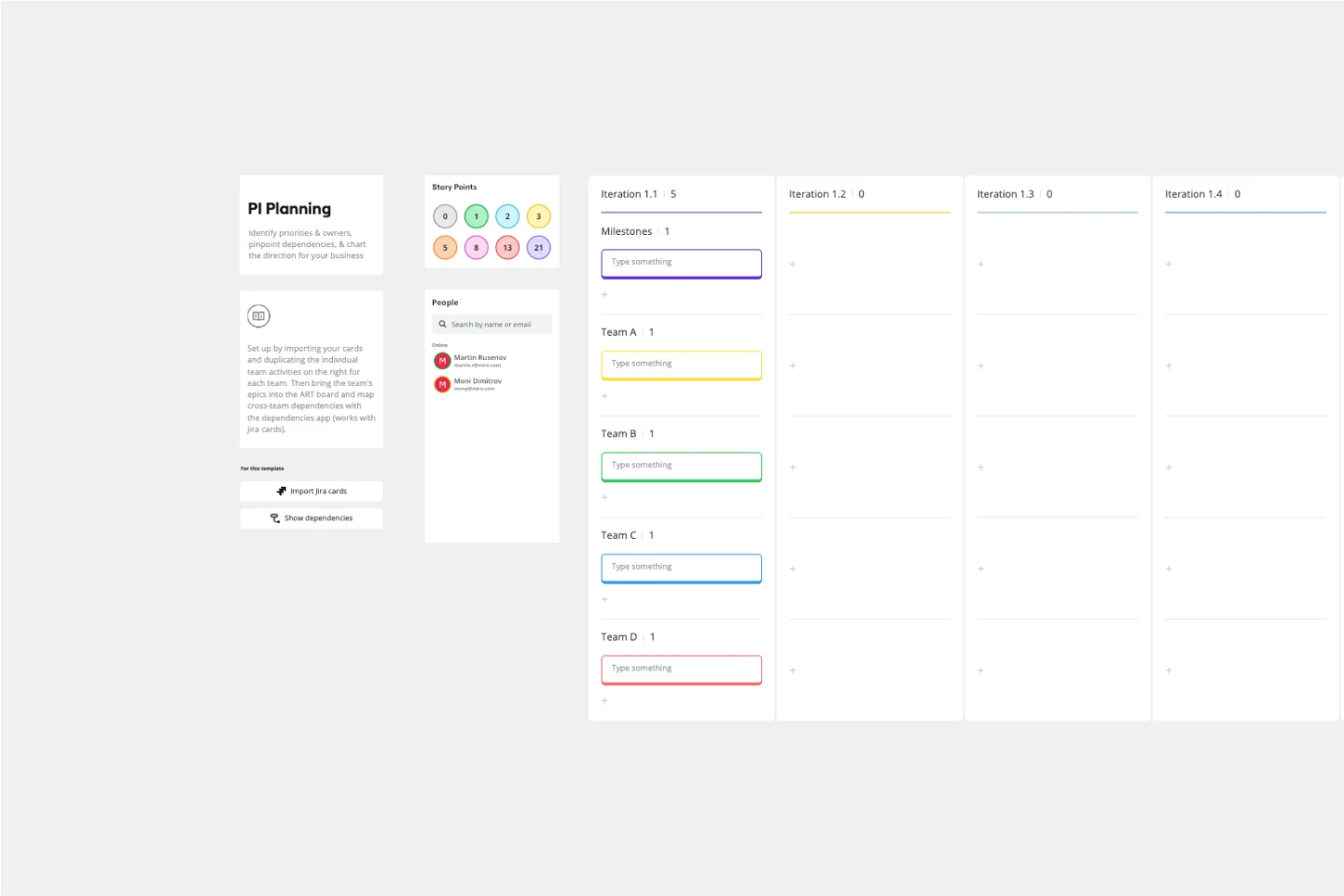All templates
Agile templates
Minimize the time needed to synthesize and distribute findings after a meeting, and move straight into executing strategies with Miro's Agile templates collection. From kanban framework to agile roadmaps, find everything you need to bring teams up to speed.
Sub categories
Sidekicks
AI Collaborators designed with specific skills like research, planning, or diagramming.

Agile Coaching
Improve team workflows with pragmatic Agile Coaching.
7 likes
77 uses

Tech Spec Writing
Write detailed technical specs and acceptance criteria.
1 likes
9 uses
Templates
1868 templates
AI Sprint Planning Template
16 likes104 uses
Daily Stand-up Meeting AI Template
4 likes91 uses
PI Planning AI Template
1 likes26 uses
Agile Board Template
1 likes73 uses
Agile Product Roadmap
264 likes2.8K uses
Agile Product Roadmap 🚀
77 likes883 uses
Sailboat Retrospective
2.1K likes45K uses
Mario Kart Sprint Retrospective
1.1K likes15K uses
User Journey Map
1.3K likes12K uses
AJ&Smart's Remote Design Sprint
847 likes11K uses
Lean Inception Workshop
891 likes10K uses
The Design Sprint by Jake Knapp
803 likes10K uses
Timeline Design ⏳
893 likes7.6K uses
Retro Man Retrospective
685 likes7.6K uses
Festival Retrospective
483 likes7.5K uses
The Hot Air Balloon Retrospective
351 likes7.2K uses
⚓️ Midnight Sailboat Retrospective
1.7K likes6.9K uses
Miro Basics: Guide for New Participants
342 likes6.8K uses
Retrospective in the Island of Golocans
601 likes6.4K uses
Project - Timeline & Key Infos
788 likes6.2K uses
Skill Cards
1.4K likes6.2K uses
Product Discovery Ideation Session
781 likes6K uses
Starfish Retrospective
277 likes6K uses
Virtual 5-Day Design Sprint
882 likes5.1K uses
Harry Potter Retrospective
780 likes5.1K uses
Star Wars Jedi Master Retrospective
468 likes5K uses
8 Different Ways to Organize Your Backlog
1.1K likes5K uses
Retrospective
391 likes4.5K uses
Retrospective VICE VERSA
570 likes4.4K uses
Scrum Puzzle Iteration Game
360 likes4.1K uses
Retrospective - Christmas Edition
333 likes4K uses
The 4-Step Retrospective
270 likes3.8K uses
User Flows
421 likes3.8K uses
Start, Stop, Continue Retrospective
269 likes3.8K uses
Lean Canvas
277 likes3.7K uses
SIPOC Process Map
114 likes3.6K uses
Marvellous Retrospective
483 likes3.6K uses
Reflection Island: End of Year Team Retro
706 likes3.6K uses
Agile Marketing KANBAN
565 likes3.6K uses
Personas Workshop
513 likes3.4K uses
Service Blueprinting Workshop
442 likes3.4K uses
Super Mario Retrospective
308 likes3.4K uses
